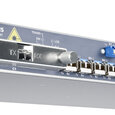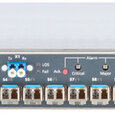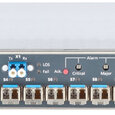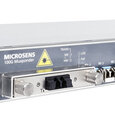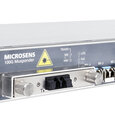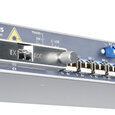For many carriers, 10 Gbps will continue to be the most important transmission rate in the near future. The call for bandwidth, however, is continuously increasing and the demand for connections with a transmission rate of 100 Gbps is growing. Microsens enable their customers to immediately use the 100G technology by means of the combination of a 100G transponder and muxponder. The operating mode is exclusively determined by the corresponding firmware. Service providers will benefit in even two respects: The existing networks are completely maintained. At the same time, the providers can now also fulfil the individual demands of their customers for fast Ethernet connections in the short term.
If the system is used as a 100G muxponder, the 10 independent channels can be used to transfer different protocols, such as 8G Fibre Channel, OTU2, OC-192/STM-64, 10GbE, and 10G Fibre Channel. To work with low transmission rates, additional TDM multiplexers can directly be pre-connected at the client interface, which permits the transmission of other services and rates, such as OC-48/STM-16, OC-12/STM-4, OC-3/STM-1, 1/2/4G FC, or 10/100 Ethernet.
When being employed as a transponder, the Microsens 100G solution again proves to be a convincing one due to its sophisticated functions, which protect investment in the long term and increase the quality level at the same time. On demand, a programmable chip permits an update of the Microsens Next Generation Fast Error Correction (NG FEC). This allows the carrier to benefit in the short term from the new findings on error correction in 100G networks. In total, the optical signal-noise ratio, i.e. the OSNR performance, is in the range of 14 dB. The transponder uses DP-QPSK with a coherent receiver as a digital modulation procedure. It ensures the compatibility to the ITU grids with 50 and 100 GHz.
The Microsens 100G solution can be monitored via SNMP or a standardized management interface, including a Command Line Interface (CLI). Moreover, Digital Diagnostics Management (DDM) can be used via the SFP+ interfaces. At the line end, a 10-Mb data communications channel is provided for remote management. The management via the Microsens Network Management System is also supported.







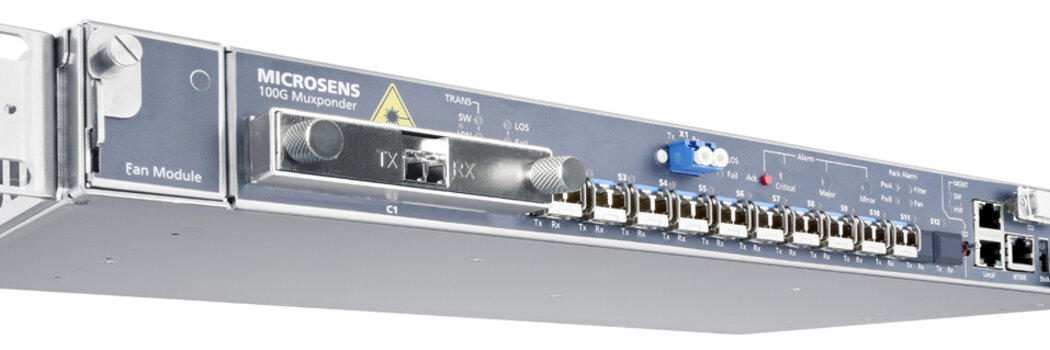
 PDF Document
PDF Document
